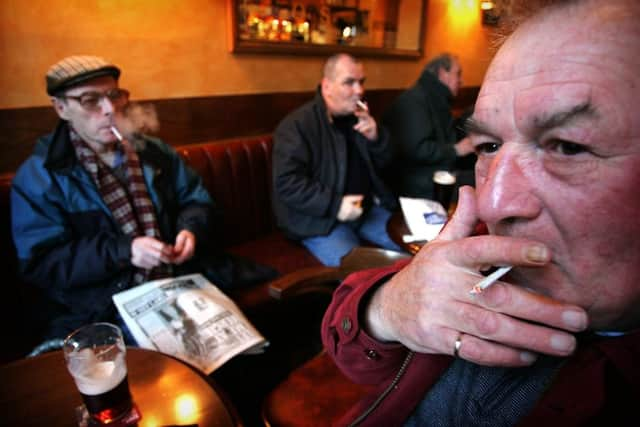Second-hand smoke exposure falls by 97 per cent over 20 years


University of Stirling research found dramatic reductions in second-hand smoke exposure since 1998 and evidence of continuing improvements in the decade after the smoking ban which came into force on 26 March 2006.
At present 21 per cent of adults in Scotland are smokers and rates have dropped from 28 per cent in 2003 to the current figure. There are over 10,000 smoking-related deaths in Scotland each year and around a fifth of all deaths are linked to tobacco.
Advertisement
Hide AdAdvertisement
Hide AdThe research was led by Dr Sean Semple, associate professor in the University’s Institute for Social marketing in collaboration with scientists at the Institute of Occupational Medicine in Edinburgh and the Universities of Glasgow and Heriot Watt.
He said: “Our analysis showed that Scotland has made even greater progress in protecting non-smokers from second-hand smoke than previous reports had suggested. Since 1998 the average amount of cotinine - a biomarker for exposure to tobacco smoke – measured in non-smokers’ saliva has reduced by over 97 per cent.
“The paper also shows that the proportion of non-smokers who have no measurable evidence of cotinine in their saliva has increased at almost every survey year and now stands at more than four out of every five adults. However, that still means nearly one-fifth of non-smoking adults experience regular exposure to second-hand smoke.
“We recommend policymakers use these two measures – the average amount of cotinine in non-smokers’ saliva, and the proportion of non-smokers with no detectable levels of cotinine – as targets to further drive progress to Scotland achieving a tobacco-free generation by 2034.”
Sheila Duffy, Chief Executive of ASH Scotland,said: “It is established scientific fact second-hand tobacco smoke is harmful to health and is associated with a range of illnesses. I am delighted to see the huge reductions in second-hand smoke exposure in Scotland, delivering a healthier living environment to nearly half the population. This is the result of deliberate and sustained work by successive Scottish administrations and is a clear example of the benefits of public health campaigns.”
Scottish Government Minister for Public Health Joe FitzPatrick said: “The dangers of second-hand smoke are well documented and we’re delighted the firm action taken here in Scotland is making such a difference improving the health of the nation.
“Ultimately our goal is to create a tobacco free generation by 2034.”